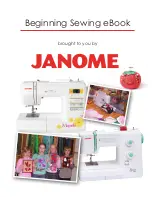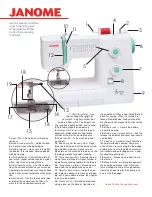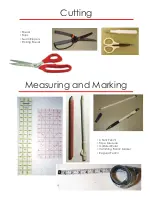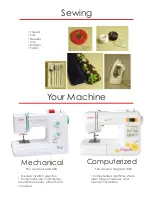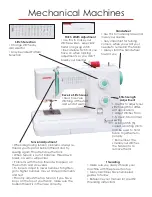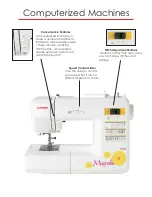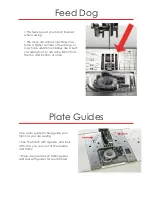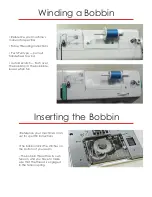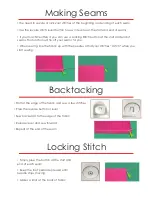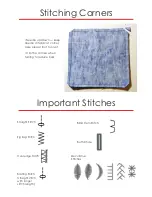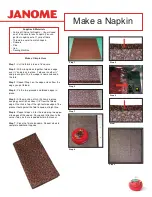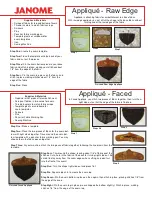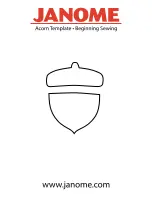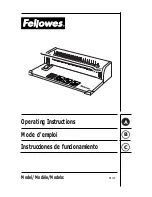
Mechanical Machines
Stitch Selection
• Change stitches by
dial selector
• May be called Pattern
Selection
Handwheel
• Use this to manually raise and
lower your needle
• Very important for turning
corners, when you want your
needle to remain in the fabric
• Always turn the handwheel
toward you
Stitch Length
Adjustment
• Use this to adjust your
stitch length for differ-
ent applications
• Adjust stitches from
1-5; Use 2-3 for normal
sewing
• A long stitch (5),
called a basting stitch,
can be used to hold
fabric together tem-
porarily
• Remember: the
smaller your stitches,
the harder it is to
remove them!
Stitch Width Adjustment
• Use this to make your
stitches wider – especially
helful on zig-zag stitch
• Be careful which foot you
have on when making
adjustments, so you don’t
break your needle!
Reverse Stitch Lever
•Used to secure
stitching at the start
and end of seams
Tension Adjustment
•When diagnosing tension problems, always re-
thread your top and bobbin thread and try
sewing again. This often does the trick
• When tension is out of balance, threads will
break, or seams will pucker
• Problems with the top thread will appear on
the bottom and vice versa
• To loosen, adjust to lower number. To tighten,
go to higher number; move 1/2 step increments
and test
• This only adjusts the top tension, if you have
loops on the top of your fabric, make sure the
bobbin thread is in the case correctly
Threading
• Make sure you always thread your
machine with the presser foot up
• Many machines have numbered
guides to follow
• Reference your manual for specific
threading instructions
Summary of Contents for Sewist 500
Page 1: ...Beginning Sewing eBook brought to you by ...
Page 13: ......

